Alumni
In Their Words

Allen Taylor
"The primary value of the NKS Summer School to me was in making it clear what NKS is all about. It is about applying a new mode of thinking to the solution of scientific problems. This has enabled me to look at my research in new ways and has given me new pathways toward solutions to problems."

Anshul Jain
"The best three weeks of my life! From discussions about AI to art, it really was a great learning experience."
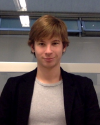
Brian Mayer
"A life-changing experience that anyone who wants to learn the latest subjects in science and get in touch with great people should try."
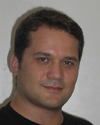
Dag Sørebø
"The NKS Summer School is an intellectual tour de force, with highly competent instructors and fellow students."

Daniel de Souza Carvalho
"If you want to see life, the universe and everything else from a computing point of view, NKS Summer School is the right place to start!"

Emmanuel Gárces Medina
"It's a great environment for students of everywhere with a lot of conversations about nature, computations, complexity and new ideas arising in these current times."
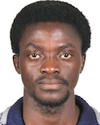
Emmanuel Salawu
"The best thing that happened to me in July 2013 was attending the Wolfram Science Summer School! Its memories will linger, and the knowledge gathered will forever be handy. I can't predict the future, but I am confident of this."
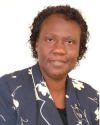
Francisca Aladejana
"With the little I have seen, the world of learning should be getting ready for NKS take-over!"

Mayla Boguslav
"I enjoyed the experience and learned a lot from other students, instructors and my mentor. The idea of looking through a defined space, searching for the interesting cases is fascinating and will change how I research, because you never know what you will find."
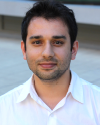
Milad Abou Dakka
"This Summer School went far beyond my expectations in terms of benefit to my research, smart and friendly staff, networking opportunities and an intellectually stimulating atmosphere."

Nestor Diaz
"The Wolfram Summer School was one of my greatest life experiences; I gained new tools that help me to do my research in a better way, and meeting people from many cultures around the world is something unique."
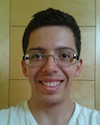
Raúl Cázares
"The Wolfram Science Summer School is an amazing multi-disciplinary and multicultural experience. It changes your mind, the way you usually work, gives you more points of view and helps you for your career."

Ruaridh O'Donnell
"It doesn't matter that much if you don't have a clear idea for a project, what you do in the end doesn't really matter, it seems like it would be fun doing any project."

Sa'di Altamimi
"It's like infinite knowledge compressed into a three-week program—hard working, no tiredness, only excitement!"

Sean Lynch
"It's a learning experience for anyone interested in being a part of an exciting new frontier. I got the sense of being one of a large group of people working to build the groundwork for this new science."
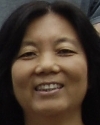
Weili Luo
"It is a truly interdisciplinary and intercultural experience that I will never forget… The NKS Summer School enabled me to learn many aspects of NKS and Mathematica and to be able to produce meaningful results in a very short time."
Advice for Future Attendees…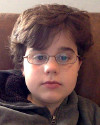
Chris Cooley
"Read the A New Kind of Science book. Prepare to meet people from many diverse backgrounds (this truly is one of the Summer School's greatest strengths—everyone is from everywhere, and there are a variety of ages and education levels to be seen). Come up with a preliminary project idea. Practice the Wolfram Language with the provided problem sets."

Evangelos Georgiadis
"Internalize the key points of NKS!"

Luca Zammataro
"The only way to understand a complex system is to recreate it on your computer. NKS methods are the best."

Martin Schneider
"Learn Mathematica.
Read the book.
Have fun!"
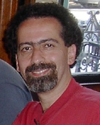
Pedro P.B. de Oliveira
"Learn as much Mathematica as possible beforehand. Try to find a project topic before the school and prepare for it by reading related background material, with emphasis on the relevant parts of the NKS book. In order to help this, browse the booklet of Open NKS Problems."
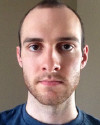
Samuel Buteau
"Keep an open mind. Try to identify the most important directions to explore, and if stuck, break tasks down and run through all the subtasks starting with the easiest one."
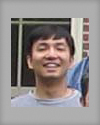
Thomas Zheng
"Get ready for some serious intellectual stimulation!"

Chris Cooley
"Read the A New Kind of Science book. Prepare to meet people from many diverse backgrounds (this truly is one of the Summer School's greatest strengths—everyone is from everywhere, and there are a variety of ages and education levels to be seen). Come up with a preliminary project idea. Practice the Wolfram Language with the provided problem sets."

Evangelos Georgiadis
"Internalize the key points of NKS!"
Luca Zammataro
"The only way to understand a complex system is to recreate it on your computer. NKS methods are the best."

Martin Schneider
"Learn Mathematica.
Read the book.
Have fun!"

Pedro P.B. de Oliveira
"Learn as much Mathematica as possible beforehand. Try to find a project topic before the school and prepare for it by reading related background material, with emphasis on the relevant parts of the NKS book. In order to help this, browse the booklet of Open NKS Problems."

Samuel Buteau
"Keep an open mind. Try to identify the most important directions to explore, and if stuck, break tasks down and run through all the subtasks starting with the easiest one."

Thomas Zheng
"Get ready for some serious intellectual stimulation!"
- 22nd Annual Wolfram Summer School
- Bentley University, Waltham, MA, USA
- June 23–July 11, 2024












